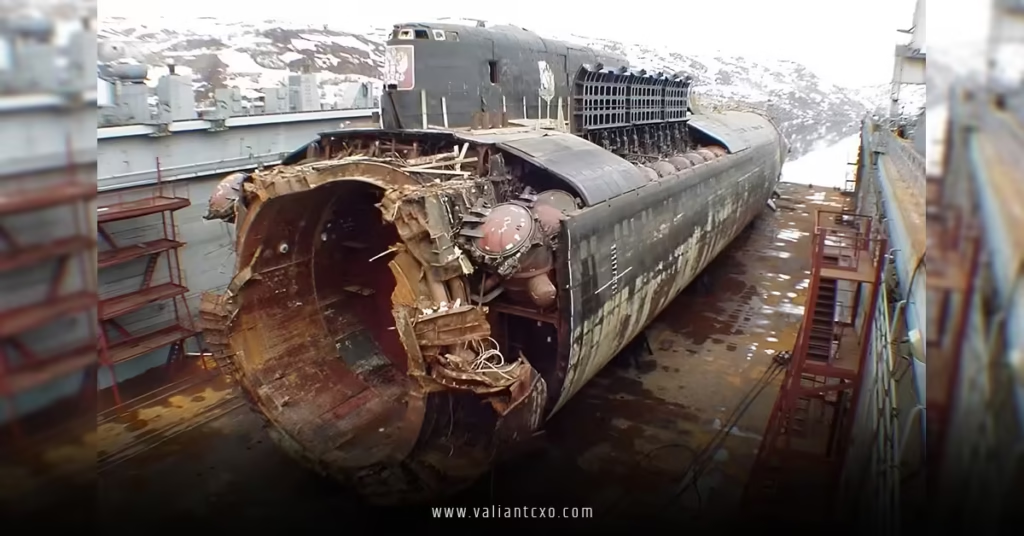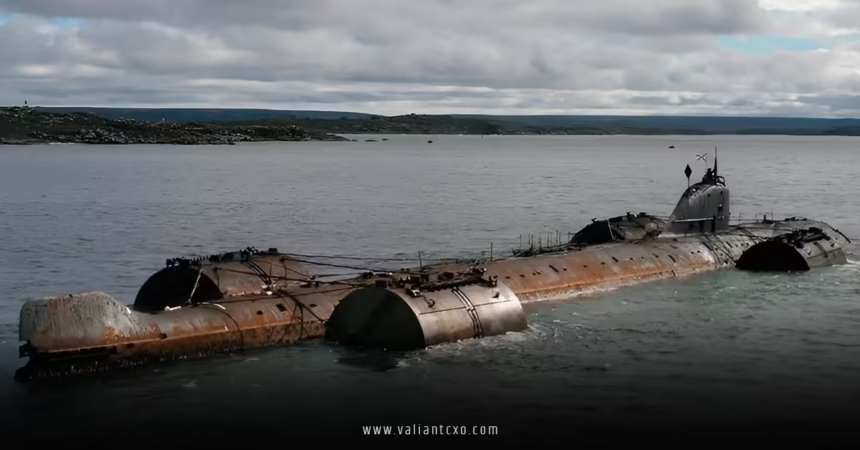Russian nuclear submarine accident – those words alone send chills down my spine, don’t they? Imagine being trapped hundreds of feet underwater in a metal tube packed with nuclear reactors and weapons, and suddenly, everything goes haywire. It’s like playing Russian roulette with the ocean as your opponent. In this deep dive, we’re going to explore the harrowing history of russian nuclear submarine accidents, from the Cold War era to more recent scares. I’ll break it down in a way that’s easy to follow, sharing stories that highlight the bravery of crews, the flaws in technology, and the lessons we still need to learn. Stick with me, and by the end, you’ll see why these events aren’t just footnotes in history – they’re warnings etched in the deep blue.
The Evolution of Russian Nuclear Submarines: A Risky Race to the Depths
Let’s start at the beginning, shall we? The Soviet Union, and later Russia, poured massive resources into building a fleet of nuclear-powered submarines during the Cold War. These beasts were designed to lurk undetected, carrying missiles that could end civilizations. But with great power comes great peril – and russian nuclear submarine accidents became an unfortunate side effect of that ambition.
Think of these subs like high-stakes sports cars: fast, powerful, but if something breaks, the crash is catastrophic. The first nuclear subs rolled out in the 1950s, and by the 1960s, models like the Hotel-class (which included the infamous K-19) were patrolling the seas. They ran on nuclear reactors that provided endless energy, but those same reactors could turn deadly if cooling systems failed. Over the decades, Russia has built over 250 nuclear submarines, more than any other nation. Yet, this impressive fleet has been marred by a string of russian nuclear submarine accidents, each one exposing cracks in design, training, and maintenance.
Why so many mishaps? Well, the pressure was on – literally and figuratively. The Soviets rushed production to match the U.S., often skimping on safety. Analogies aside, it’s like building a skyscraper without enough steel beams; eventually, something gives. From reactor leaks to fires and explosions, these incidents have claimed hundreds of lives and left radioactive scars on the ocean floor.
Iconic Russian Nuclear Submarine Accident: The K-19 Widowmaker Saga
Ah, the K-19 – if ever there was a sub that earned its grim nickname, it’s this one. This russian nuclear submarine accident in 1961 was like a horror movie unfolding in real time, deep in the North Atlantic. Picture this: It’s July 4, 1961, and the crew is on a routine patrol when the reactor’s cooling system springs a leak. No backup pumps, because who needs those, right? The temperature skyrockets, threatening a meltdown that could have rivaled Chernobyl at sea.
Captain Nikolai Zateyev, a real hero in my book, ordered a team of eight brave souls to jury-rig a fix using whatever they had – pipes from the drinking water system, even. They succeeded in venting the steam, but at a terrible cost. Radiation flooded the sub, and those eight men died agonizing deaths within days. Over the next two years, 14 more succumbed to radiation poisoning. Can you imagine the guilt and fear rippling through the rest of the crew?
But wait, K-19 wasn’t done making headlines. This cursed vessel had multiple russian nuclear submarine accidents, including a fire in 1969 and a collision in 1979. It was like the sub had a death wish. Decommissioned in 1990, its reactors were dumped in the Kara Sea, adding to environmental worries. Stories like this remind us how human error and rushed tech can turn a marvel into a monster.
The Heartbreaking Kursk Russian Nuclear Submarine Accident of 2000
Fast forward to the turn of the millennium, and we hit one of the most infamous russian nuclear submarine accidents: the Kursk disaster. On August 12, 2000, during a naval exercise in the Barents Sea, the Oscar II-class sub K-141 Kursk was practicing torpedo launches when boom – a faulty peroxide-fueled torpedo exploded in the bow. That blast set off a chain reaction, detonating the warheads and ripping the front apart.
The sub sank to 108 meters, with 118 crew members aboard. Most died instantly, but 23 survived in the aft compartments, scribbling desperate notes like, “It’s too dark to write here, but I’ll try by feel. It seems like there’s no chance, 10-20%.” Heart-wrenching, isn’t it? They banged on the hull for help, but Russian authorities dithered, refusing international aid at first. President Putin, fresh in office, faced massive backlash for vacationing while the drama unfolded.
Finally, Norwegian and British divers arrived, but it was too late. The entire crew perished, making this russian nuclear submarine accident a symbol of post-Soviet military woes. The wreck was raised in 2001, revealing the devastation. Analogous to the Titanic of modern times, the Kursk tragedy sparked reforms, but questions linger: Was it a collision with a NATO sub, as some claim? Or just plain negligence?

Deep-Sea Inferno: The K-278 Komsomolets Russian Nuclear Submarine Accident
Now, let’s talk about the K-278 Komsomolets, a unique titanium-hulled attack sub that could dive deeper than anything else – up to 1,000 meters. But on April 7, 1989, this engineering wonder turned into a nightmare during a patrol in the Norwegian Sea. A fire broke out in the aft engineering compartment, likely from a short circuit or hydraulic fluid leak. Flames spread fast, disabling systems and filling the air with toxic smoke.
The crew fought valiantly, but the sub surfaced erratically. As it sank back down, 42 of the 69 aboard lost their lives to hypothermia, drowning, or the fire itself. Two nuclear-tipped torpedoes went down with it, resting at 1,680 meters and leaking radiation ever since. Recent expeditions in 2019 and beyond have shown elevated radiation levels around the wreck, like a slow-motion environmental bomb ticking away.
This russian nuclear submarine accident highlighted the risks of experimental designs. Komsomolets was a one-of-a-kind, built to outmaneuver enemies, but its complexity backfired. It’s like inventing a supercar that handles great until the brakes fail on a mountain road.
Other Notorious Russian Nuclear Submarine Accidents You Should Know
The list doesn’t stop there. Take the K-219 in 1986 – another russian nuclear submarine accident where a missile silo fire led to an explosion off Bermuda. The sub sank with nuclear warheads aboard, prompting U.S. Navy surveillance. Four crew died, but the rest were rescued. Then there’s K-8 in 1970, which caught fire in the Bay of Biscay, sinking after a heroic but failed tow attempt, claiming 52 lives.
More recently, the K-159 in 2003 sank while being towed for scrapping, killing nine. And in 2008, the Nerpa (K-152) had a freon gas leak during trials, suffocating 20. These russian nuclear submarine accidents paint a pattern: fires, leaks, and human factors like poor maintenance or training gaps.
Even in 2019, a fire on the secretive Losharik sub killed 14 elite officers. And just this year, reports of issues with the Novorossiysk suggest problems persist. Why do these keep happening? It’s a mix of aging fleets, budget cuts, and the inherent dangers of nuclear tech underwater.
Causes Behind Russian Nuclear Submarine Accidents: Peeling Back the Layers
So, what ties these russian nuclear submarine accidents together? Fires are a big culprit – subs are crammed with flammable materials, and oxygen is limited, making any blaze a death trap. Reactor issues, like in K-19, stem from design flaws or rushed builds. Torpedo and missile malfunctions, as in Kursk and K-219, show how volatile weapons can be.
Human error plays a role too. Overworked crews, inadequate training – it’s like sending pilots up without enough simulator time. Environmental factors? The Arctic’s icy waters add pressure, literally crushing hulls if dives go wrong. And let’s not forget secrecy: The Russian Navy’s habit of downplaying incidents delays lessons learned.
Comparatively, the U.S. has had fewer such disasters, like Thresher in 1963, thanks to stricter safety protocols. But Russia is improving, with newer Borei-class subs incorporating better tech.
The Human and Environmental Toll of Russian Nuclear Submarine Accidents
These aren’t just mechanical failures; they’re human tragedies. Families left without fathers, sons, brothers – the Kursk widows’ protests still echo. Radiation exposure has caused long-term health issues for survivors, like cancers and genetic defects.
Environmentally, sunken subs like Komsomolets and dumped reactors in the Arctic are “slow-motion Chernobyls.” Fish stocks in busy fisheries could be contaminated, affecting global food chains. International tensions rise too – remember the U.S. recovering parts of K-129 in 1974? It was a spy thriller come to life.
But there’s hope: Joint monitoring efforts with Norway show cooperation can mitigate risks.
Lessons Learned and the Future of Russian Nuclear Submarines
What can we take from these russian nuclear submarine accidents? Safety first – invest in redundancies, better training, and international help when needed. Putin’s reforms post-Kursk included fleet upgrades, but challenges remain with sanctions and aging vessels.
Looking ahead, Russia’s pushing hypersonic missiles on subs, but without addressing root causes, more accidents loom. It’s like upgrading a car’s engine without fixing the brakes. We all benefit from safer seas, so here’s hoping transparency wins out.
Conclusion
Wrapping this up, russian nuclear submarine accidents like those of K-19, Kursk, and Komsomolets reveal the perilous dance between human ingenuity and nature’s unforgiving depths. They’ve claimed lives, sparked reforms, and raised alarms about nuclear risks at sea. But they also showcase incredible heroism – crews sacrificing everything to avert worse disasters. If you’re fascinated by history’s undercurrents, dive deeper into these stories. Who knows? Understanding the past might just prevent future tragedies. Stay curious, and remember: the ocean keeps its secrets, but we can learn from the ones it reveals.
FAQs
What caused the most famous russian nuclear submarine accident?
The Kursk russian nuclear submarine accident in 2000 was triggered by a faulty torpedo explosion during exercises, leading to the loss of all 118 crew members despite survival efforts in sealed compartments.
How many russian nuclear submarine accidents have involved radiation leaks?
Several, including the K-19 in 1961 and K-278 Komsomolets in 1989, where reactor issues or fires caused radiation exposure, resulting in immediate deaths and long-term environmental concerns.
Are there ongoing risks from past russian nuclear submarine accidents?
Yes, wrecks like the Komsomolets still leak radiation, posing threats to marine life. Monitoring continues, but these russian nuclear submarine accidents highlight the need for better decommissioning practices.
What reforms followed major russian nuclear submarine accidents?
After the Kursk disaster, Russia improved rescue capabilities and fleet maintenance. However, incidents like the 2019 Losharik fire show that russian nuclear submarine accidents remain a challenge.
Can civilians learn more about specific russian nuclear submarine accidents?
Absolutely – documentaries and books detail events like the K-19. For accurate info on russian nuclear submarine accidents, check reliable historical sources to separate fact from fiction.
Read More:valiantcxo.com


